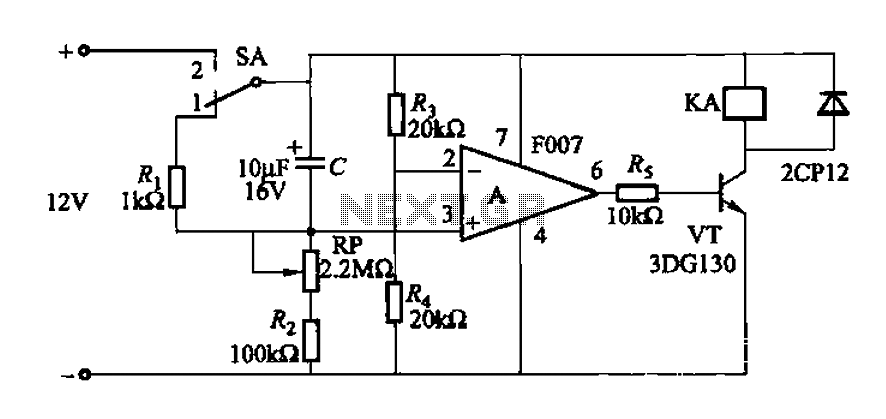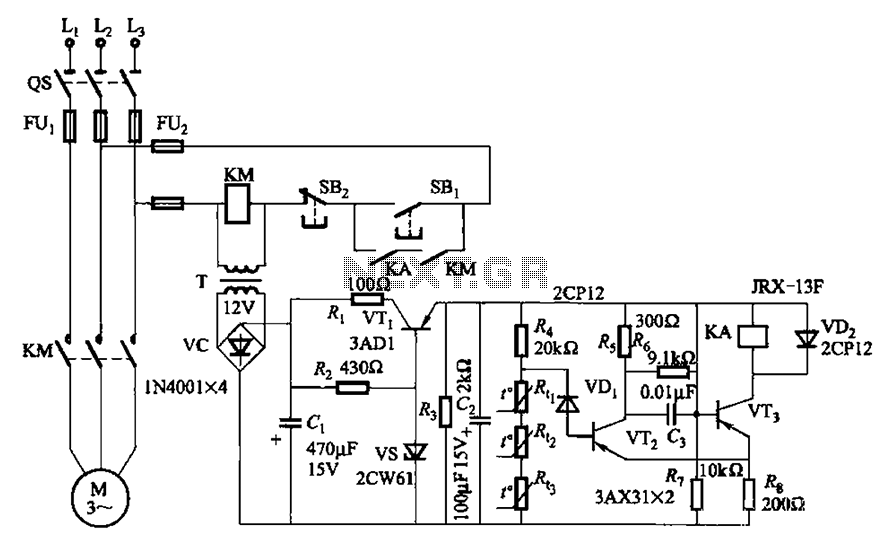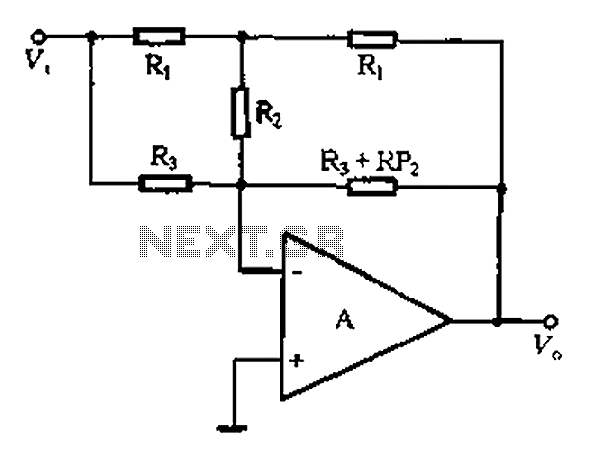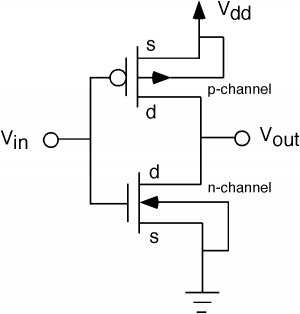
Operational Amplifiers circuits
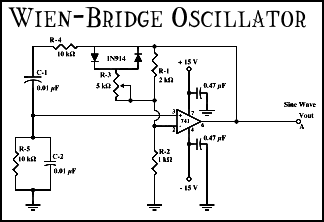
The Wien-Bridge oscillator meets specific requirements due to the presence of a low-pass filter, a high-pass filter, and a 180-degree phase shift from the feedback networks connecting the input to the output. This configuration results in a total phase shift of 360 degrees, which is necessary to initiate oscillation in the circuit. When all three criteria are satisfied and the resonant frequency is below 1 MHz, the circuit generates a sine wave from a DC power source. The second stage of the function generator involves a Schmitt Trigger, which converts the sine wave into a square wave. This conversion occurs because the input signal is sufficiently large to surpass both the lower and upper voltage trip points. Consequently, when the upper part of the sine wave reaches the output voltage, it drives the output directly to +Vsat, remaining there until the lower peak causes it to drop to -Vsat repeatedly. This circuit produces a "ramp" voltage. Typically, a capacitor would be placed in the negative feedback loop; however, to eliminate any output offset voltage, a resistor is added in parallel with the capacitor. This configuration not only limits the output offset but also creates a "virtual ground." The virtual ground is established by the high input impedance of the 741 operational amplifier, approximately 150 MΩ. In this arrangement, the input resistor connects to the positive input while another resistor from the output signal also connects to the positive input. The total current flows through the first resistor and divides towards the second resistor due to its easier path to ground. When configured in this manner, as long as both resistors are less than 150 MΩ, a ratio effect occurs between them. This ratio, or gain, can be adjusted to control the level of amplification. Introducing the capacitor results in the generation of a sawtooth waveform. In summary, the 741 operational amplifier is versatile and can be utilized in various configurations to produce a wide range of outputs. By adjusting component values and connections, it is possible to create and manipulate desired AC output signals.
The Wien-Bridge oscillator is a well-established circuit used for generating sine waves, characterized by its simplicity and effectiveness. The oscillator’s architecture typically includes resistors and capacitors arranged to provide the necessary phase shifts. The low-pass and high-pass filters serve to shape the frequency response, ensuring that only the desired frequencies are amplified and sustained in oscillation. The feedback mechanism is critical, as it stabilizes the amplitude of the oscillation and ensures consistent output.
In the second stage, the Schmitt Trigger is an essential component for converting the sine wave output of the Wien-Bridge oscillator into a square wave. The Schmitt Trigger employs hysteresis, which provides a clear threshold for switching states, resulting in a clean transition from low to high states without the noise that can occur in less robust designs. This characteristic is particularly advantageous in digital applications where signal integrity is paramount.
The addition of a resistor in parallel with the capacitor in the feedback loop of the Schmitt Trigger serves multiple purposes. It mitigates any potential output offset voltage, which can distort the waveform, and it creates a virtual ground that stabilizes the operational amplifier's input. The high input impedance of the 741 operational amplifier is a significant feature, allowing it to interface with high-impedance sources without loading them down, thus preserving the integrity of the input signal.
The gain of the circuit can be finely tuned by adjusting the ratios of the resistors, allowing for versatile applications across various frequency ranges. This adjustability, combined with the ability to generate different waveforms—such as sine, square, and sawtooth—makes the 741 operational amplifier an invaluable tool in signal processing and function generation applications. By experimenting with different component values and configurations, engineers can tailor the output to meet specific requirements, enhancing the circuit's functionality in a range of electronic projects.The Wien-Bridge oscillator fulfills these requirements because there is a low pass filter, a high pass filter and a 180 deg. phase shift from the feedback networks from the input to output. This totals 360 deg. to start the circuit oscillating. If all three of the criteria are met and you have a resonant Grequency under 1 MHz, then you have a cir
cuit that produces a Sine Wave from a DC power source. The second stage of our Function Generator is this Schmitt Trigger. This circuit is used to convert a Sine Wave into a Square Wave. This happens because the input signal is large enough to pass through both the lower and the upper voltage trip points. This is possible when the upper part of the Sine Wave hits the output voltage. The voltage will go directly to +Vsat and stay there until the lower peak causes it to go to -Vsat add infinitum.
This circuit produces a "ramp" voltage. Normally you would have just a capacitor in the negative feedback loop. But because we want no output offset voltage, we had to put a resistor in parallel with the cap. Besides limiting the output offset, it produces our "Virtual Ground. " This virtual ground is created by the 741`s very high input impedance. About 150 M*`s of it. What happens is the input resistor is connected to the positive input and a resistor coming from the output signal is connected also to the +in. Total current will go through the first resistor and split towards the second resistor because it`s an easier path to ground.
When this is set up like this, as long as both resistors are less than 150 Megs, a ratio situation occurs between them. Depending on the ratio, or Gain created, you can control how much amplification it has. Now throe in the cap and a Saw Tooth wave shape is created. In conclusion, the 741 Op Amp can be used in a variety of ways to produce many different outputs. It does this by having many diverse methods of installation. By playing with component values and connections, you can create and manipulate any desired AC output signals.
🔗 External reference
The Wien-Bridge oscillator is a well-established circuit used for generating sine waves, characterized by its simplicity and effectiveness. The oscillator’s architecture typically includes resistors and capacitors arranged to provide the necessary phase shifts. The low-pass and high-pass filters serve to shape the frequency response, ensuring that only the desired frequencies are amplified and sustained in oscillation. The feedback mechanism is critical, as it stabilizes the amplitude of the oscillation and ensures consistent output.
In the second stage, the Schmitt Trigger is an essential component for converting the sine wave output of the Wien-Bridge oscillator into a square wave. The Schmitt Trigger employs hysteresis, which provides a clear threshold for switching states, resulting in a clean transition from low to high states without the noise that can occur in less robust designs. This characteristic is particularly advantageous in digital applications where signal integrity is paramount.
The addition of a resistor in parallel with the capacitor in the feedback loop of the Schmitt Trigger serves multiple purposes. It mitigates any potential output offset voltage, which can distort the waveform, and it creates a virtual ground that stabilizes the operational amplifier's input. The high input impedance of the 741 operational amplifier is a significant feature, allowing it to interface with high-impedance sources without loading them down, thus preserving the integrity of the input signal.
The gain of the circuit can be finely tuned by adjusting the ratios of the resistors, allowing for versatile applications across various frequency ranges. This adjustability, combined with the ability to generate different waveforms—such as sine, square, and sawtooth—makes the 741 operational amplifier an invaluable tool in signal processing and function generation applications. By experimenting with different component values and configurations, engineers can tailor the output to meet specific requirements, enhancing the circuit's functionality in a range of electronic projects.The Wien-Bridge oscillator fulfills these requirements because there is a low pass filter, a high pass filter and a 180 deg. phase shift from the feedback networks from the input to output. This totals 360 deg. to start the circuit oscillating. If all three of the criteria are met and you have a resonant Grequency under 1 MHz, then you have a cir
cuit that produces a Sine Wave from a DC power source. The second stage of our Function Generator is this Schmitt Trigger. This circuit is used to convert a Sine Wave into a Square Wave. This happens because the input signal is large enough to pass through both the lower and the upper voltage trip points. This is possible when the upper part of the Sine Wave hits the output voltage. The voltage will go directly to +Vsat and stay there until the lower peak causes it to go to -Vsat add infinitum.
This circuit produces a "ramp" voltage. Normally you would have just a capacitor in the negative feedback loop. But because we want no output offset voltage, we had to put a resistor in parallel with the cap. Besides limiting the output offset, it produces our "Virtual Ground. " This virtual ground is created by the 741`s very high input impedance. About 150 M*`s of it. What happens is the input resistor is connected to the positive input and a resistor coming from the output signal is connected also to the +in. Total current will go through the first resistor and split towards the second resistor because it`s an easier path to ground.
When this is set up like this, as long as both resistors are less than 150 Megs, a ratio situation occurs between them. Depending on the ratio, or Gain created, you can control how much amplification it has. Now throe in the cap and a Saw Tooth wave shape is created. In conclusion, the 741 Op Amp can be used in a variety of ways to produce many different outputs. It does this by having many diverse methods of installation. By playing with component values and connections, you can create and manipulate any desired AC output signals.
🔗 External reference
